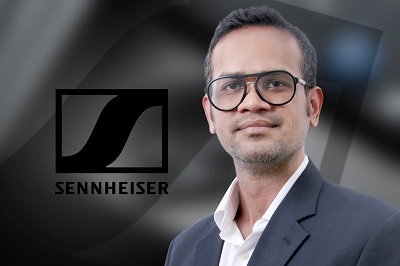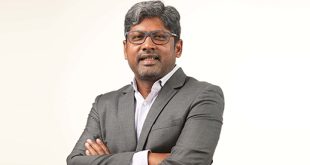In a brief conversation with Amit Singh on the professional audio market and Sennheiser’sIndia story and focus areas, Mridul Jain,Director-Sales, Business Communication, Sennheiser Electronics India mentions that meeting rooms are moving towards touchless and flexible solutions like ceiling microphones to cater to the mid-sized meeting room’s requirements

The covid-19 pandemic caused the relocation of employees from the office to a work-from-home setup driving digital collaborations remotely. How did it affect the collaboration and audio solutions market in India?
The unified communications market saw a dip in 2020 as businesses as well as customers were confused about how things were going to behave. Schools and parents were not prepared and were confused about the mode and method of learning. However, with much clarity in 2021, the market reached almost 2019 levels.
As organizations and consumers are accepting the hybrid mode of work, unified communication as the enabler of remote work is going to stay. Meeting rooms are moving towards touchless and flexible solutions like ceiling microphones which can cater to large and mid-sized meeting rooms where participants are sitting while keeping safe distances. These ceiling microphones have 28 in-built phones to capture and track voice from each participant sitting across the room. In fact, the opportunity from mid-sized meeting rooms is going to be huge going forward.
How large are the unified communications or audio conferencing markets?
Unfortunately, India is an unorganized market in terms of the audio solutions business. So I won’t be able to put any numbers. But what we understand from our sales engine people are moving towards better audio solutions over the last couple of years. People are understanding that audio plays a critical role in the overall experience through a meeting, presentation, or lecture.
In a typical corporate meeting, initial 15-20 minutes go into setting up the systems, which leaves us with just 40 minutes of discussion in a 1-hour meeting slot. Our objective is to help deliver the best experience through the meetings; for us, the content of the meeting is of utmost importance and products are just a catalyst.
The audio solutions market is filled with many players and high competition. In this scenario, how do you differentiate from the competition?
We do a number of demos and PoCs to help clients understand and appreciate our solutions better. People appreciate the amount of effort we put in for PoCs to let them understand our products better. Starting with our India presence in 2007, we have made a lot of investments across three sales offices, service excellence centers, and a huge sales and technical force.
How does the India market contribute to the global business of Sennheiser? How do you see this contribution growing over the next few years?
India does not contribute that big a number on the global scale; however, the appetite for absorption is amazing in terms of the customer base. Our India story started 5-6 years back and has been witnessing double-digit growth. India is a growing market and will be the next big thing. While most of the premium brands focus on markets like the Americas and Europe, we are equally focused on the APAC story. Our idea is to educate customers to appreciate what premium audio solutions bring to the table. We are doing a lot of demos and PoCs for the customers to appreciate the audio quality we offer.
The business communication division of Sennheiser is driven by distributors and AV partners/solution providers. Being a family-driven business, we bring the same ethos to the Indian context as India is a relationship-centric market. We focus on building strong relations with distributors and partners, which implement our solutions at the customer end.
Further, AV solutions is not a box-pushing business and Sennheiser comes forward as a part of the comprehensive solution. Here, AV system integrators play an important role and are supported by 10 of our distributors spread across the country.
What are your top focus areas and how do you see segments like education, government, and corporate to contribute to your India business?
Our major focus areas consist of presentations and lecture theatre rooms, which comprise our focus on the education sector. In addition, meetings and conference rooms in the corporate segment is a major focus area as this segment is highly focused on market-leading audio solutions. Another focus is on assistive listening, which is still at a nascent stage in terms of acceptability in India. We are doing our best to bring this as a standard solution for the time to come.
As of now, the government is contributing almost 50 percent of our entire business communication turnover in India. The percentage is more skewed towards the government sector over the last two years as the government has been quite actively spending on infrastructure. On the other hand, the corporate, enterprise, and education segments restricted their infrastructure spending to critical areas only. The corporate segment contributed 35-38 percent and the rest is added by education.
Moving forward, we expect these three segments to contribute equally. On top of that, we would like to grow by higher double digits. So while percentage contribution may decrease for a few segments, the overall value contributed will increase significantly. In fact, we expect huge spending from these three segments over the next five years; professional audio is going to play a big role.
 Latest Technology News Today – Get Latest Information Technology Updates and Services Latest Technology News Today – Get Latest Information Technology Updates and Services
Latest Technology News Today – Get Latest Information Technology Updates and Services Latest Technology News Today – Get Latest Information Technology Updates and Services 









